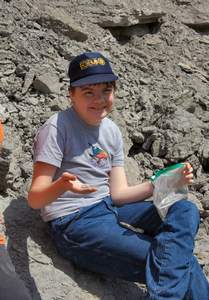
The attraction for this field trip is that these road cuts are rich in the large Ordovician Brachiopod, Vinlandostrophia ponderosa. Everybody found enough that day to make them happy.
In April, the Dry Dredgers continued their series of field trips that have not been visited in a while. Our destination is a pair of road cuts exposing the Bellevue and Corryville Formations. We have last visited this site in March 2001.

The attraction for this field trip is that these road cuts are rich in the
large Ordovician Brachiopod, Vinlandostrophia
ponderosa. Everybody found enough
that day to make them happy.
The day began with rain overnight, which seems to be a theme these days. The
midwest has been having more than their share of rain. At least for fossil
hunting, it's been a good thing
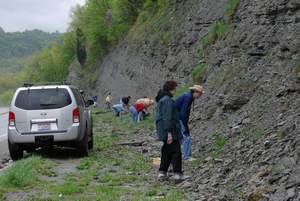
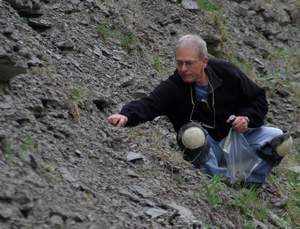


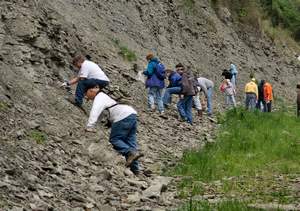
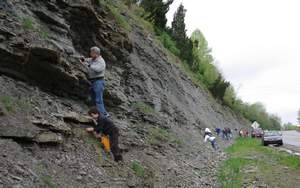

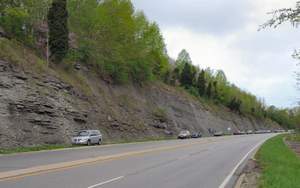
Alycia Stigall, of Ohio University, was the guest presenter at our April field
trip. And since the field trip is the morning after the meeting and several of
her grad students are studying the Upper Ordovician formations, it was very
timely that they were able to join us on the field trip!
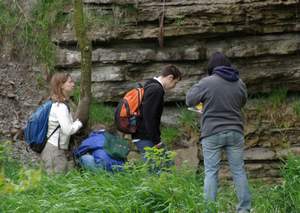
It was great meeting each of them. They helped us with the identification of the
layers and we helped them locate the best fossil sites for their studies.
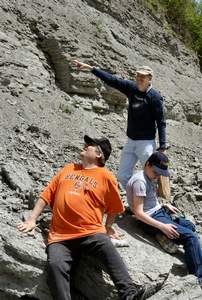
David had to point out that Bob and Taylor were sitting on a pile of rocks
that is about to become a bigger pile of rocks, one of our continuing hazards
as we collect fossils on road cuts.
Fossils Found That Day
Trilobites
Naturally some of the best finds that day were whole Flexicalymene meeki trilobites.
One of the graduate students visiting from Ohio University,
found that really nice double Rusophycus. These are trilobite burrows, likely
to
be made by Flexicalymene meeki.
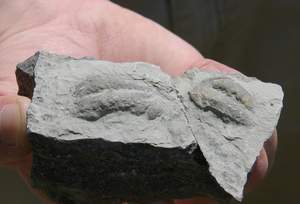
Some of the Flexicalymene trilobites found were found on the surface of rocks
and could be whole underneath the rock.
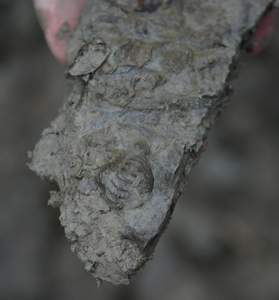
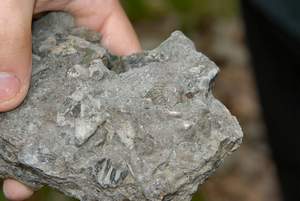
Many of the rocks were nearly covered with trilobite
parts. Here's one rock with Flexicalymene
parts, denoted in red and Isotelus
parts, denoted in yellow.
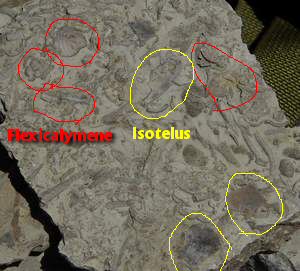
Echinoderms
One of the Echinoderms we found that day was this
disarticulated Edrioasteriod. (This specimen was
actually found at the third site).

The best Echinoderm found that day, was this nice
crinoid
calyx. I'm pretty sure this one is
Pycnocrinus dyeri. (next 3
pics)
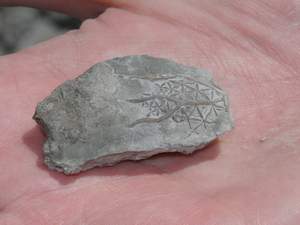
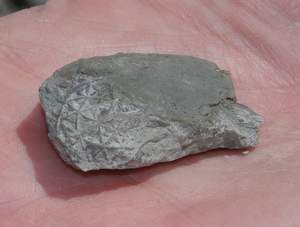
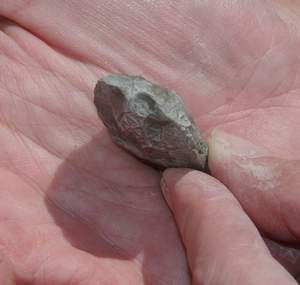
More common were articulated crinoid stems on the surface of
rocks.
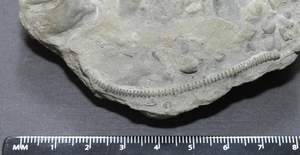
Brachiopods
The brachiopods are what this site is known for. In
particular, there were massive quantities of two brachs, Vinlandostrophia
ponderosa (next pic) and Rafinesquina
ponderosa (second pic). Thus the nickname for the site, the Ohio Ponderosa
Ranch.
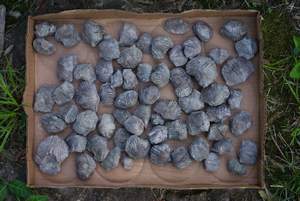

Many of these Vinlandostrophia are partially hollow and have been
"geodized," that is to say, filled in with crystals.
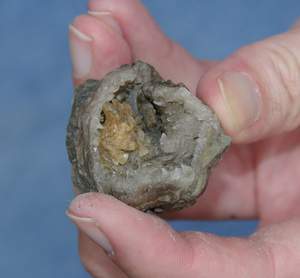
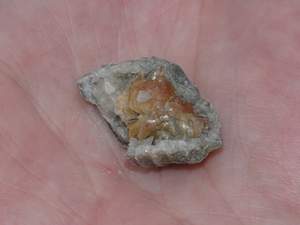
There was another common species of Rafinesquina found that
day. It's a species limited primarily to the Corryville formation, Rafinesquina
nasuta (next 2 pics). They can be identified by the "nose" you can see
pretty clearly in the next pic.
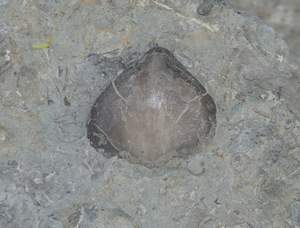
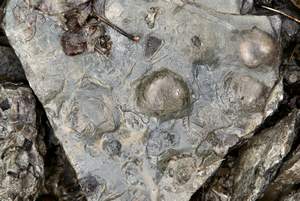
The Vinlandostrophia ponderosa were the most abundant. They
loaded into layers of rock as is shown below.

Here's a typical bag of them as one member continues to
collect.


Another species of Vinlandostrophia that was found
is P. laticosta.
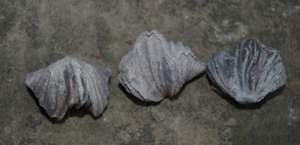
There were lots of examples of a common inarticulate
brachiopod named Petrocrania scabiosa (2 pics). These appear as scabby patches
on brachiopods, such as these Rafinesquina.
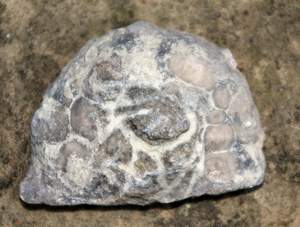
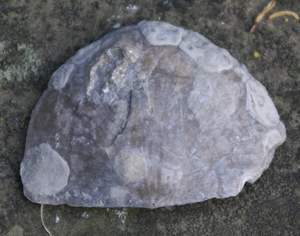
Another common Brachiopod found was Hebertella
occidentalis. Shown in the
first pic are two Hebertellas with one Vinlandostrophia. The second picture
is one Hebertella and the third shot shows a
line of Hebertella.

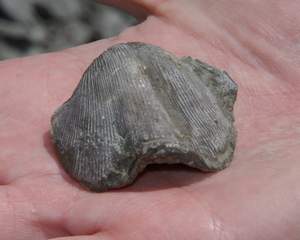
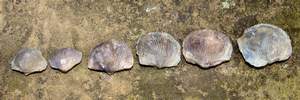
Nautiloid Cephalopods
Quite a lot of straight shelled Nautiloid Cephalopods were
found.


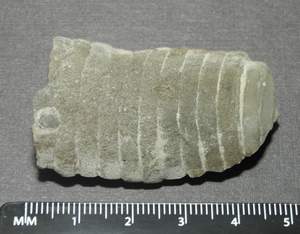
The one on the left in the next picture has a gastropod in
side of it. The snail is probably of the genus, Paupospira. How it
got there, I'm not sure. I think entered the living chamber of the empty
Cephalopod shell.
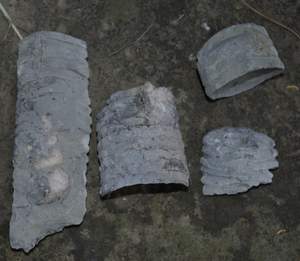
Ichnofossils (Trace Fossils)
This is a really interesting trace fossil. It's a burrow of
some kind. The fact that it is split down the middle makes you think it's
a trilobite burrow. Several rocks with this trace were found in the same spot
coming out of the same layer on the third site.
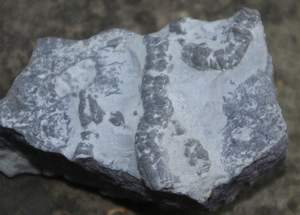
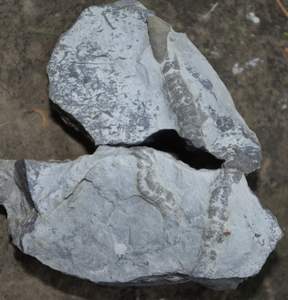
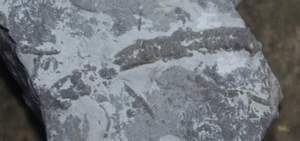
This next fossil is interesting because the rusty material
appears to have bleeded into the surounding shale. These could be crinoid stems
or they could be burrows.
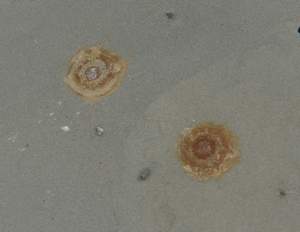
Most of the trace fossils were burrows along the surface of
the rocks, like the one below. Note the cross-crossing.
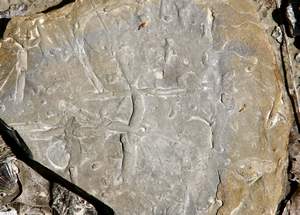
Pelecypods (Bivalves or Clams)
The sites for this month were also good sites for clams. Here
are some of the internal molds of what is probably Ambonychia.
(next 2 pics).
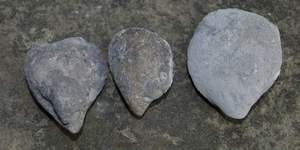

Here's a "black clam" that a member found. It has a
slightly carbonized surface but is an internal mold. It could be a Modiolopsis.
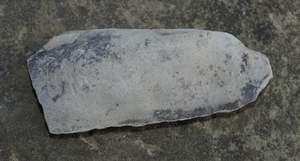
This next clam has shell material fossilized as the brown
coloring seen below. Because of this, we can have confidence that this is a Caritodens.
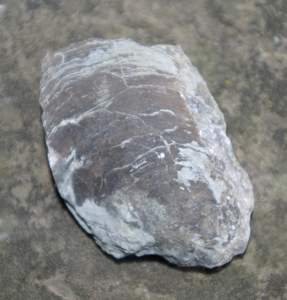
Gastropods (Snails)
Here's a very artsy rock, decorated with cross-sections of
snails in the matrix.
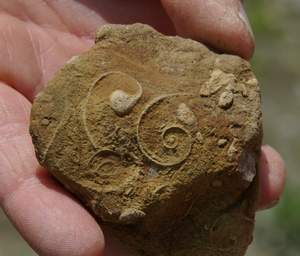
Commonly found on these sites, were the Gastropods with
external shell features, called Cyclonema.

This next gastropod, which is coiled inward, as apposed to
spired, is either a Sinuites, or the monoplacophoran, Cytrolites.
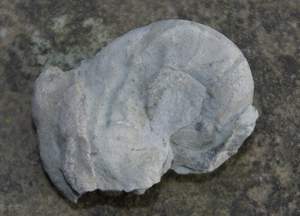
Bryozoans
As always, plenty of Bryozoans were
available. Some of the larger chunky ones, as in the next two pictures, may be Heterotrypa
subfrondosa
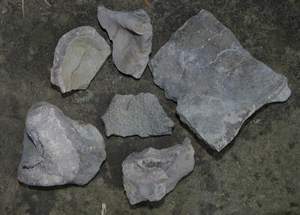

Another bulky Bryo found in good quantities was Monticulipora
mammulata. This next pic is probably one of those.
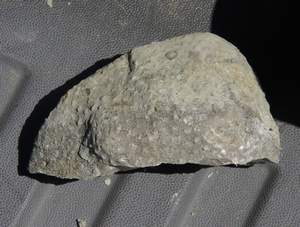
That's it for this field trip. Now have a look at our 2008 trip to Aurora, North Carolina.
Return to Dry Dredgers Home Page
The Dry Dredgers and individual contributors reserve the
rights to all information, images, and content presented here. Permission to
reproduce in any fashion, must be requested in writing to admin@drydredgers.org.
www.drydredgers.org is designed and maintained by Bill Heimbrock.